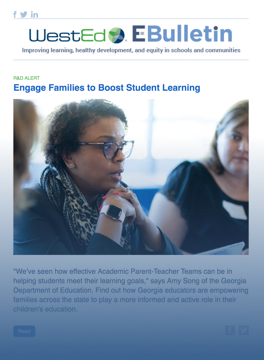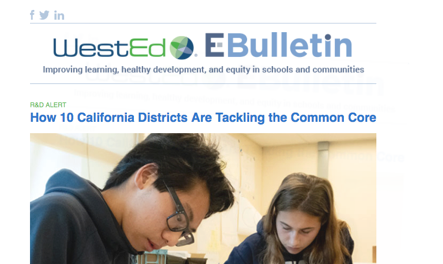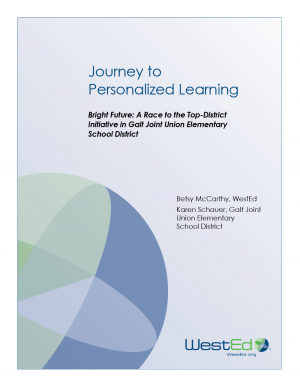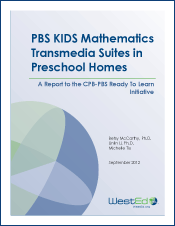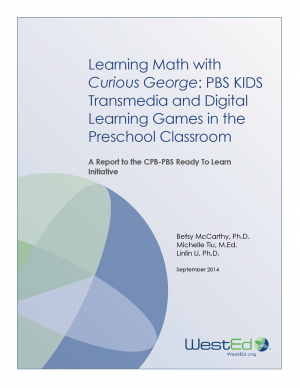Journey to Personalized Learning - Bright Future: A Race to the Top-District Initiative in Galt Joint Union Elementary School District
Description
Personalized learning provides students with a degree of choice in how and what they learn, which allows them to build upon their individual strengths, needs, motivations, and goals.
Personalized learning policies and funding sources are increasing in school districts nationwide. However, there remains a strong need to identify best practices in personalized learning and to articulate its benefits and challenges.
WestEd’s evaluation of Galt Joint Union Elementary School District’s (GJUESD) Bright Future initiative speaks to this need. Located in California, the small to mid-sized district supports a population of diverse learners. For instance, the percentage of students classified as low-socioeconomic status ranges from 40% to 81% across the district’s schools; the percentage of students classified as English language learners ranges from 8% to 55% across each of the district’s schools; and the percentage of students receiving special education services ranges from 13% to 17%.
GJUESD’s Bright Future initiative allowed for students, from transitional kindergarten to grade eight, to experience personalized learning in their classrooms and in other environments, including in their school library; after-school clubs; school-based and off-site outdoor service-learning activities (e.g., nature areas, garden habitats); and in students’ homes.
Researchers examined the components of the district’s personalized learning initiative, and identified implementation successes and challenges. This paper:
- Describes the initiative’s framework and components
- Presents excerpts of case studies on GJUESD schools currently implementing personalized learning
- Shares feedback from focus groups and interviews with GJUESD educators, administrators, and parents on the successes and challenges of implementing personalized learning at the school level
One key finding — in year four of the initiative, GJUESD was one of five districts in the state with significant growth in achievement in mathematics on the annual the Smarter Balanced Test (SBAC). The percentage of students testing proficient or above improved over multiple grade levels, including a growth of over 15 percentage points in grade 5.
Results from this evaluation can provide useful knowledge for administrators, teachers, researchers, policymakers, and others about how personalized learning can be implemented in small and medium-sized school districts that support ethnically and economically diverse populations of learners.
Resource Details
Product Information
Copyright: 2017Format: PDF
Pages: 39
Publisher: WestEd
Stay Connected
Subscribe to the E-Bulletin and receive regular updates on research, free resources, solutions, and job postings from WestEd.
Your download will be available after you subscribe, or choose no thanks.
